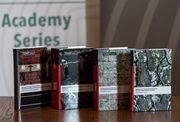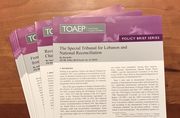Table of contents:
4.1.1. Evidence of use of physical force.
4.1.2. Evidence of absence of consent or voluntary participation
4.2. Invasion by threat of force or coercion against such person or another person.
4.2.1. Evidence of fear of violence (or duress).
4.2.2. Evidence of detention/captivity
4.2.3. Evidence of psychological oppression.
4.2.4. Evidence of abuse of power.
4.2.5. Evidence of taking advantage of a coercive environment.
4.2.6. Evidence of absence of consent or voluntary participation.
Element:
As noted by ICC Trial Chamber in The Prosecutor v. Jean-Pierre Bemba Gombo:
"The second material element of rape details the circumstances and conditions which give the invasion of the victims or perpetrators body a criminal character. It provides that, for the invasion of the body of a person to constitute rape, it has to be committed under one or more of four possible circumstances: (i) by force; (ii) by threat of force or coercion, such as that caused by fear of violence, duress, detention, psychological oppression or abuse of power, against such person or another person; (iii) by taking advantage of a coercive environment; or (iv) against a person incapable of giving genuine consent.
As noted, one of the possible circumstances for rape, as set out in the Elements of Crimes, is that a perpetrator "tak[es] advantage of a coercive environment". In interpreting the concept of a "coercive environment", the Chamber, in line with the Confirmation Decision, is guided by the Akayesu Trial Judgments discussion of "coercive circumstances": "[C]oercive circumstances need not be evidenced by a show of physical force. Threats, intimidation, extortion and other forms of duress which prey on fear or desperation may constitute coercion, and coercion may be inherent in certain circumstances, such as armed conflict or the military presence of Interahamwe among refugee Tutsi women at the bureau communal."
The Chamber does not exclude the possibility that, in addition to the military presence of hostile forces among the civilian population, there are other coercive environments of which a perpetrator may take advantage to commit rape. Further, the Chamber considers that several factors may contribute to create a coercive environment. It may include, for instance, the number of people involved in the commission of the crime, or whether the rape is committed during or immediately following a combat situation, or is committed together with other crimes. In addition, the Chamber emphasises that, in relation to the requirement of the existence of a "coercive environment", it must be proven that the perpetrators conduct involved "taking advantage" of such a coercive environment.
The Chamber notes that the victims lack of consent is not a legal element of the crime of rape under the Statute. The preparatory works of the Statute demonstrate that the drafters chose not to require that the Prosecution prove the non-consent of the victim beyond reasonable doubt, on the basis that such a requirement would, in most cases, undermine efforts to bring perpetrators to justice.
Therefore, where "force", "threat of force or coercion", or "taking advantage of coercive environment" is proven, the Chamber considers that the Prosecution does not need to prove the victims lack of consent.
Finally, the fourth possible circumstance to be considered under the Statute is that an invasion of the body of the victim or the perpetrator may also constitute rape when committed "against a person incapable of giving genuine consent". Footnotes 16 and 64 of the Elements of Crimes clarify that "a person may be incapable of giving genuine consent if affected by natural, induced or age-related incapacity". In such cases, the Prosecution will only have to prove that the victims capacity to give genuine consent was affected by natural, induced, or age-related incapacity.
The Chamber further notes that neither the Statute nor the Elements of Crimes sets out a specific age under which a person would be considered as "incapable of giving genuine consent". However, for the purpose of the present Judgment, and based on the factual findings below, the Chamber notes that it is only necessary for any one of the four alternative possible circumstances identified in Articles 7(1)(g)-1, paragraph 2, and 8(2)(e)(vi)-1, paragraph 2, to be proven.
In addition to the Chambers analysis of the legal elements constituting rape, the Chamber, when analysing evidence, is guided by Rules 70 and 71, which set out several principles of evidence in cases of sexual violence." [1]
As noted by ICTY Trial Chamber in The Prosecutor v. Jadranko Prlić et al.:
"The Appeals Chamber has clarified that the use of force or the threat thereof does admittedly constitute incontrovertible evidence of the lack of consent, but that the use of force is not a constituent element of rape per se. Indeed, there are factors other than the use of force which make sexual penetration a non-consensual act or an act the victim does not want. The Chamber holds that, in lieu of physical force, the perpetrator may be able to exploit specific circumstances which the victim experiences as so constraining that they render physical resistance instantly impossible. By way of example, it has been found that the victims detention at the time of the events may constitute such a circumstance.
In the Kunarac Case, the Appeals Chamber made it clear that the argument that "nothing short of continuous resistance provides adequate notice to the perpetrator that his attentions are unwanted is wrong on the law and absurd on the facts"[2]
The Trial Chamber in Sesay et al. referred to the Appeals Chamber in Kunarac et al. when it noted that:
"[t]he second element of the actus reus refers to the circumstances which would render the sexual act in the first element criminal. The essence of this element is that it describes those circumstances in which the person could not be said to have voluntarily and genuinely consented to the act. The use or threat of force provides clear evidence of non-consent, but it is not required."[3]
4.1.1. Evidence of use of physical force.
The Appeals Chamber in Kunarac et al. stated that:
"[f]orce or threat of force provides clear evidence of nonconsent, but force is not an element per se of rape."[4]
4.1.2. Evidence of absence of consent or voluntary participation
4.2.I nvasion by threat of force or coercion against such person or another person.
ICTR
The Akaseyu Trial Chamber stated that:
"[t]hreats, intimidation, extortion and other forms of duress which prey on fear or desperation may constitute coercion, and coercion may be inherent in certain circumstances, such as armed conflict or the military presence of Interhamwe among refugee Tutsi women at the bureau communal."[5]
ICTY
The Trial Chamber in Kunarac et al. held that the offence of rape:
"is accompanied by force or threat of force to the victim or a third party [...] or a variety of other specified circumstances which made the victim particularly vulnerable or negated her ability to make an informed refusal."[6]
Furthermore, the Kunarac et al. Appeals Chamber held that:
"there are 'factors other than force which would render an act of sexual penetration non-consensual or non-voluntary on the part of the victim'. A narrow focus on force or threat of force could permit perpetrators to evade liability for sexual activity to which the other party had not consented by taking advantage of coercive circumstances without relying on physical force. [...] the circumstances giving rise to the instant appeal and that prevail in most cases charged as either war crimes or crimes against humanity will be almost universally coercive. That is to say, true consent will not be possible." "[7]
SCSL
In Taylor, the Trial Chamber concurred with the Appeals Chamber in Kunarac et al. that:
"[t]he consent of the victim must be given voluntarily, as a result of the victim's free will, assessed in the context of the surrounding circumstances. This is necessarily a contextual assessment. However, in situations of armed conflict or detention, coercion is almost universal. Force or the threat of force provides clear evidence of non-consent, but force is not an element per se of rape and there are factors other than force which may render an act of sexual penetration non-consensual or non-voluntary on the part of the victim. 'Continuous resistance' by the victim, physical force or even threat of force by the perpetrator are not required to establish coercion. A person may be incapable of giving genuine consent if affected by natural, induced or age related incapacity."[8]
4.2.1. Evidence of fear of violence (or duress).
ICTR
The Akaseyu Trial Chamber stated that:
"[t]hreats, intimidation, extortion and other forms of duress which prey on fear or desperation may constitute coercion, and coercion may be inherent in certain circumstances, such as armed conflict or the military presence of Interhamwe among refugee Tutsi women at the bureau communal."[9]
SCSL
In Sesay et al. the Chamber held that:
"[t]he Chamber observes that an atmosphere of violence prevailed in Koidu during the attack, noting the lootings, burnings and killings occurring simultaneously. The Chamber finds that in such violent circumstances the women were not capable of genuine consent."[10]
4.2.2. Evidence of detention/captivity:
"The Trial Chamber in Furundžija determined that: "any form of captivity vitiates consent."[11]
4.2.3. Evidence of psychological oppression.
4.2.4. Evidence of abuse of power.
4.2.5. Evidence of taking advantage of a coercive environment.
The Kunarac et al. Appeals Chamber held that:
"there are 'factors other than force which would render an act of sexual penetration non-consensual or non-voluntary on the part of the victim'. A narrow focus on force or threat of force could permit perpetrators to evade liability for sexual activity to which the other party had not consented by taking advantage of coercive circumstances without relying on physical force. [...] the circumstances giving rise to the instant appeal and that prevail in most cases charged as either war crimes or crimes against humanity will be almost universally coercive. That is to say, true consent will not be possible." "[12]
4.2.6. Evidence of absence of consent or voluntary participation.
4.2.7. Evidence of incapacity to give genuine consent.
The Trial Chamber in Sesay et al. clarified that:
"the last part of this element refers to those situations where, even in the absence of force or coercion, a person cannot be said to genuinely have consented to the act. A person may not, for instance, be capable of genuinely consenting if he or she is too young, under the influence of some substance, or suffering from an illness or disability."[13]
Footnotes:
[1] ICC, The Prosecutor v. Jean-Pierre Bemba Gombo, Trial Judgement 21 March 2016, para. 102-109.
[2] ICTY, The Prosecutor v. Jadranko Prlić et al., Trial Judgement 29 May 2013 , para. 70-71.
[3] SCSL, Sesay et al. Trial Judgment 2 March 2009, para. 147; ICTY, Kunarac et al. Appeals Judgment 12 June 2002, para. 129.
[4] ICTY, Kunarac et al. Appeals Judgment 12 June 2002, para. 129.
[5] ICTR, Akayesu Trial Judgment 2 September 1998, para. 688.
[6] ICTY, Kunarac et al. Trial Judgment 22 February 2001, para. 442.
[7] ICTY, Kunarac et al. Appeals Judgment 12 June 2002, para. 129, 130; citing ICTY, Kunarac et al. Trial Judgment 22 February 2001, para. 438.
[8] SCSL, Taylor Trial Judgment 18 May 2012, para. 416; ICTY, Kunarac et al. Appeals Judgment 12 June 2002, para. 127-130, 133.
[9] ICTR, Akayesu Trial Judgment 2 September 1998, para. 688.
[10] SCSL, Sesay et al. Trial Judgment 2 March 2009, para. 1287.
[11] ICTY, Furundžija Trial Judgment 10 December 1998, para. 271.
[12] ICTY, Kunarac et al. Appeals Judgment 12 June 2002, para. 129, 130; citing ICTY, Kunarac et al. Trial Judgment 22 February 2001, para. 438.
[13] SCSL, Sesay et al. Trial Judgment 2 March 2009, para. 148.







